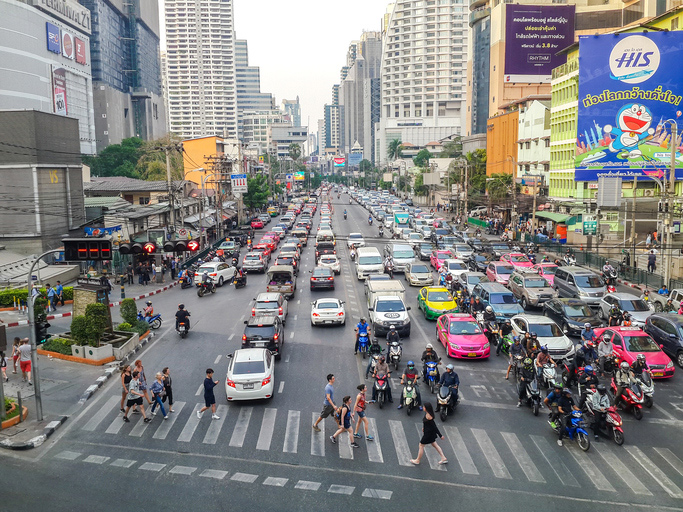At some point, it’s probably happened to you: you’re driving down a busy freeway, and ZIP – a motorcycle shoots right between you and the car next to you. If you’re like most drivers (well, most drivers who don’t also ride motorcycles), no doubt you’ve had a few choice words for the biker.
This practice – riding in the space between lanes – is called lane splitting (and is sometimes referred to as “filtering”). Very few driver’s ed courses cover it. In every state but California, it’s illegal. And while it might cause you to utter some colorful euphemisms about crazy, impatient, and dangerous bikers, there are, believe it or not, valid reasons for lane splitting. And those reasons lie at the heart of an ongoing debate in California and other states about whether or not lane splitting should be formally legalized across the country.
To understand why motorcycle riders choose to split lanes, it’s important to understand the nature of riding a motorcycle – especially through heavy traffic. The physics of riding a motorcycle are very similar to those of riding a bike – if the bike stops moving, it’ll tip over. In traffic jams, a motorcyclist is constantly in motion – the left hand is working the clutch to keep the bike from stalling at low speeds, the right hand is covering the front brake as well as keeping the throttle open (again, to prevent a stall), and in stop-and-go traffic, the rider’s feet are constantly leaving the footpegs so that the rider can put his or her feet down and literally walk the bike if the traffic speed drops into the single-digit range. (Keep in mind that a motorcycle can weigh several hundred pounds.) Ironically, there is considerable amount of danger involved in going too slow on a motorcycle.
And then there’s the weather. A good, safe rider follows this acronym: ATGATT – All The Gear, All The Time. That means a helmet, jacket (either leather or heavy textile, usually with heavy plastic padding in the shoulders, elbows and back), motorcycle pants (again, leather or heavy textile), gloves, and boots. Imagine wearing that and sitting on a freeway, unmoving, on a hot 85 degree day. Now imagine doing that while sitting on top of an exposed, running engine, radiating heat into the triple digits. The best way – really, the only way – for a motorcyclist to keep cool (and avoid heat exhaustion or heat stroke, both of which will cause the rider to pass out and crash) is to keep moving.
Both of these reasons are why lane splitting isn’t illegal in California. The problem for riders as well as drivers? It’s not technically legal, either. California law doesn’t prohibit motorcyclists from splitting lanes – but it doesn’t give any specifics as to when and how lane splitting can be performed. And that’s a problem, because California drivers aren’t given much in the way of information when it comes to lane splitting, why it’s done, and (most important) how to keep an eye out for riders who split lanes so that no one gets hurt. An attempt was made in 2013 to include lane splitting guidelines in the California Driver’s Handbook, but those were removed after objections were raised – due to the fact that there are no formal lane splitting laws.

California Assembly Bill 51 would have changed that. The bipartisan bill, authored by state Assemblyman Bill Quirk and Assemblyman (and former California Highway Patrol officer) Tom Lackey, set forth concrete guidelines for lane splitting. Motorcyclists would be prohibited from going no faster than 15 mph over the speed of surrounding traffic, and capped the overall rate of lane splitting speed at 50 mph. The bill passed the California Assembly, but has been tabled for the rest of the year. The reasons for this are numerous – from concerns about how to enforce the law to pressure from, ironically, motorcycle interest groups. The American Motorcyclist Association, for instance, found the rules too restrictive.
Still, it seems likely that the bill will become law. Proponents of lane splitting all seem to agree that formally legalizing it will make the roads safer, as motorcyclists will have guidelines to follow and drivers will understand that it is OK for riders to move between lanes.












